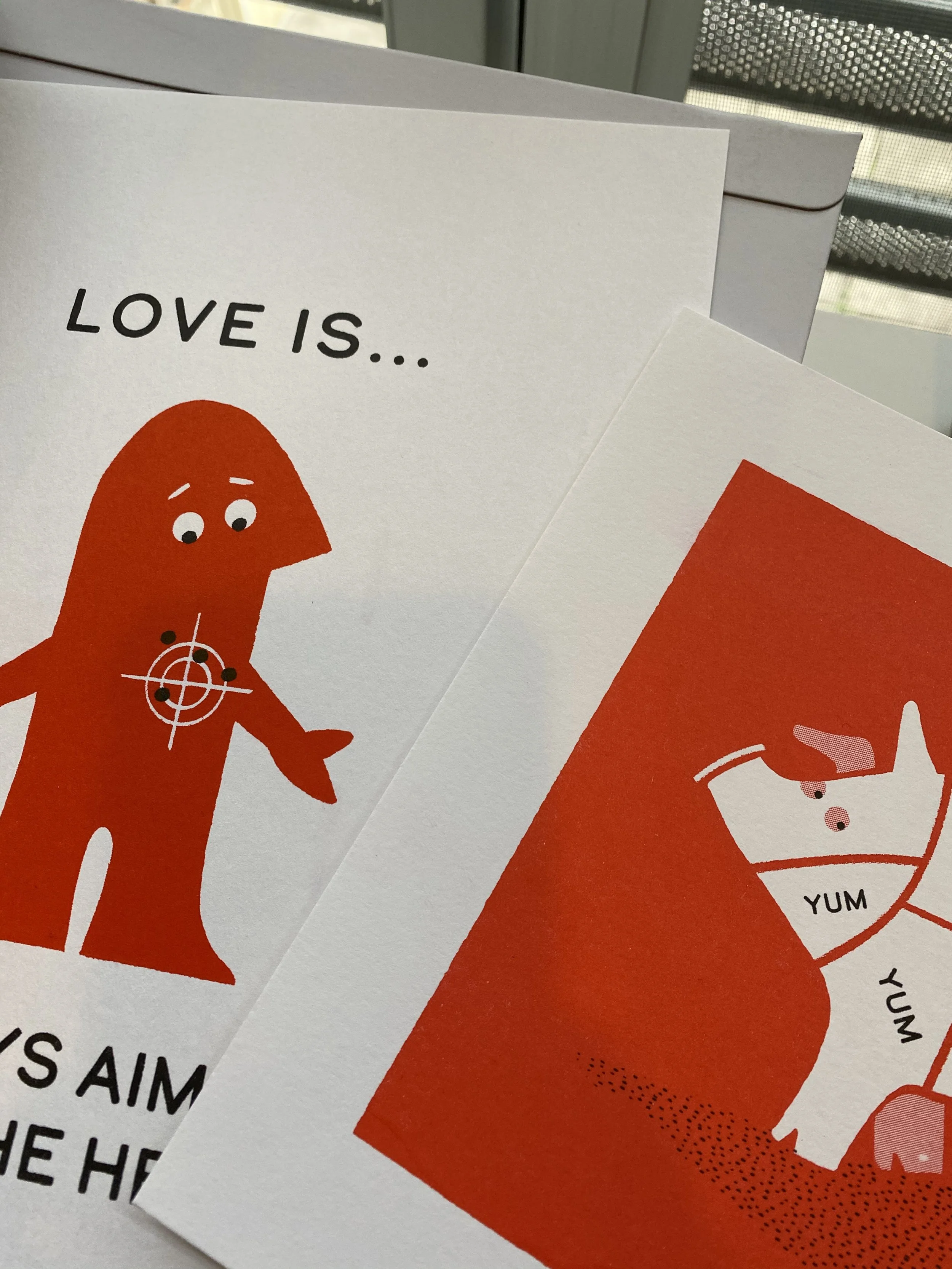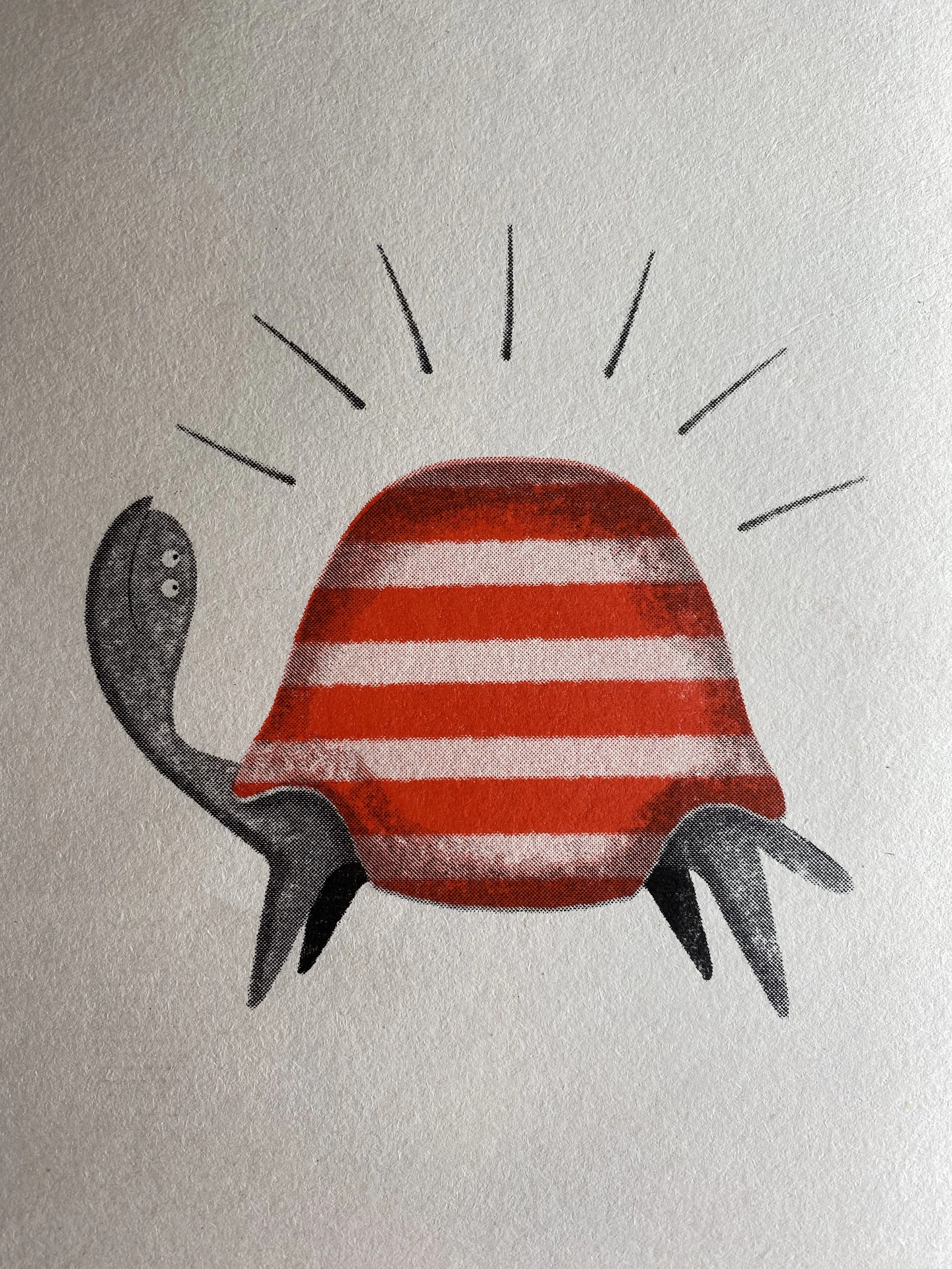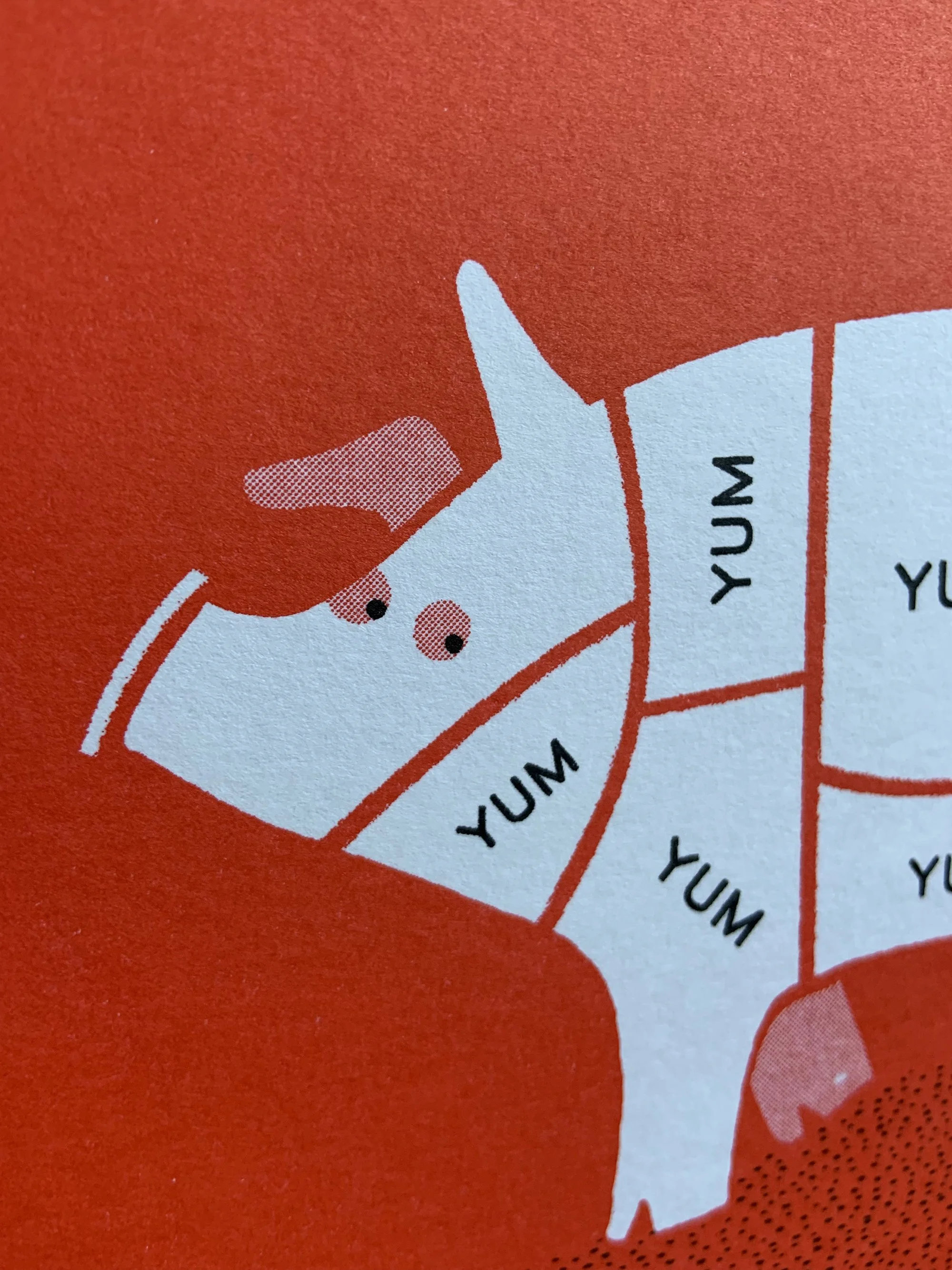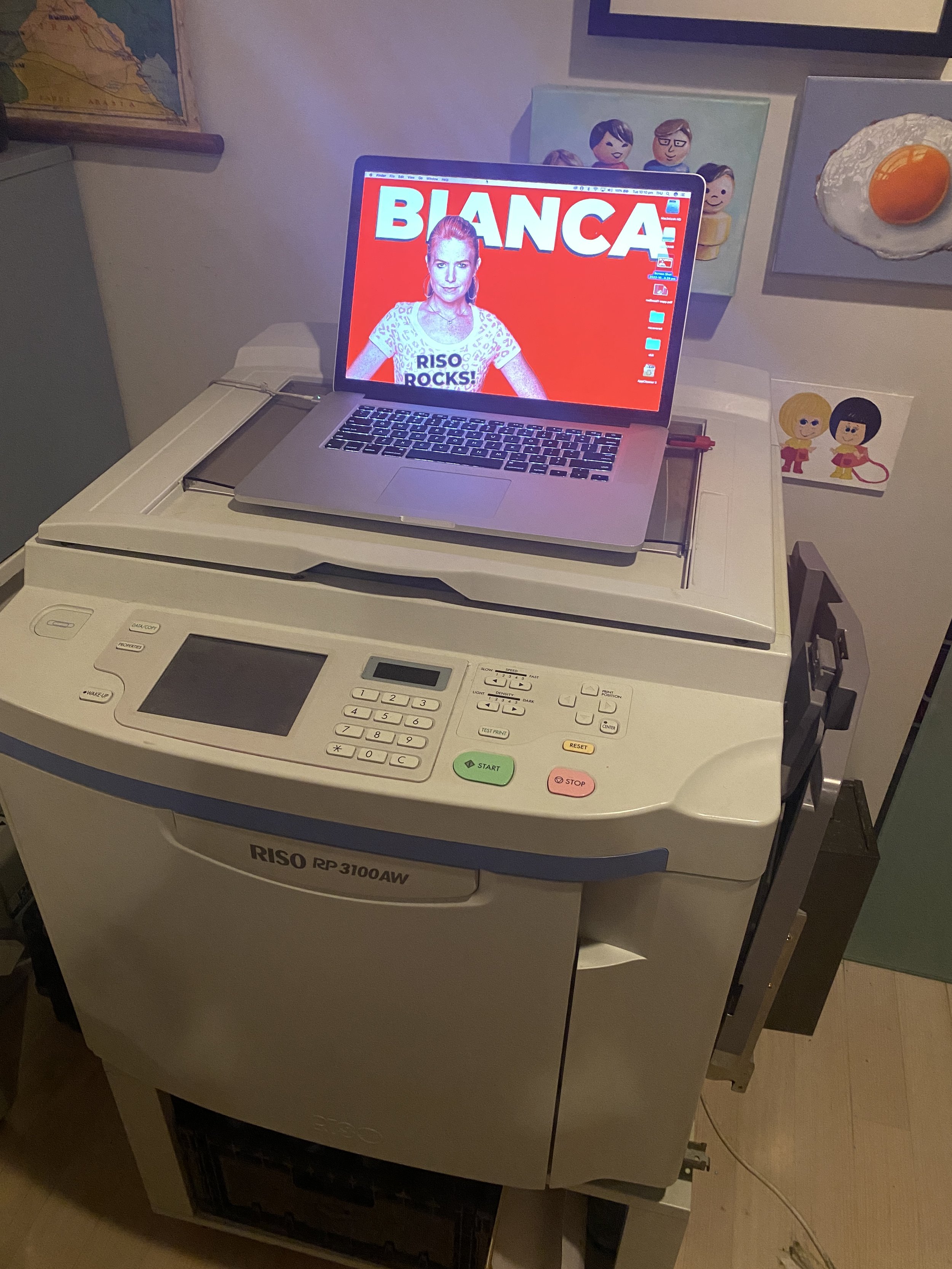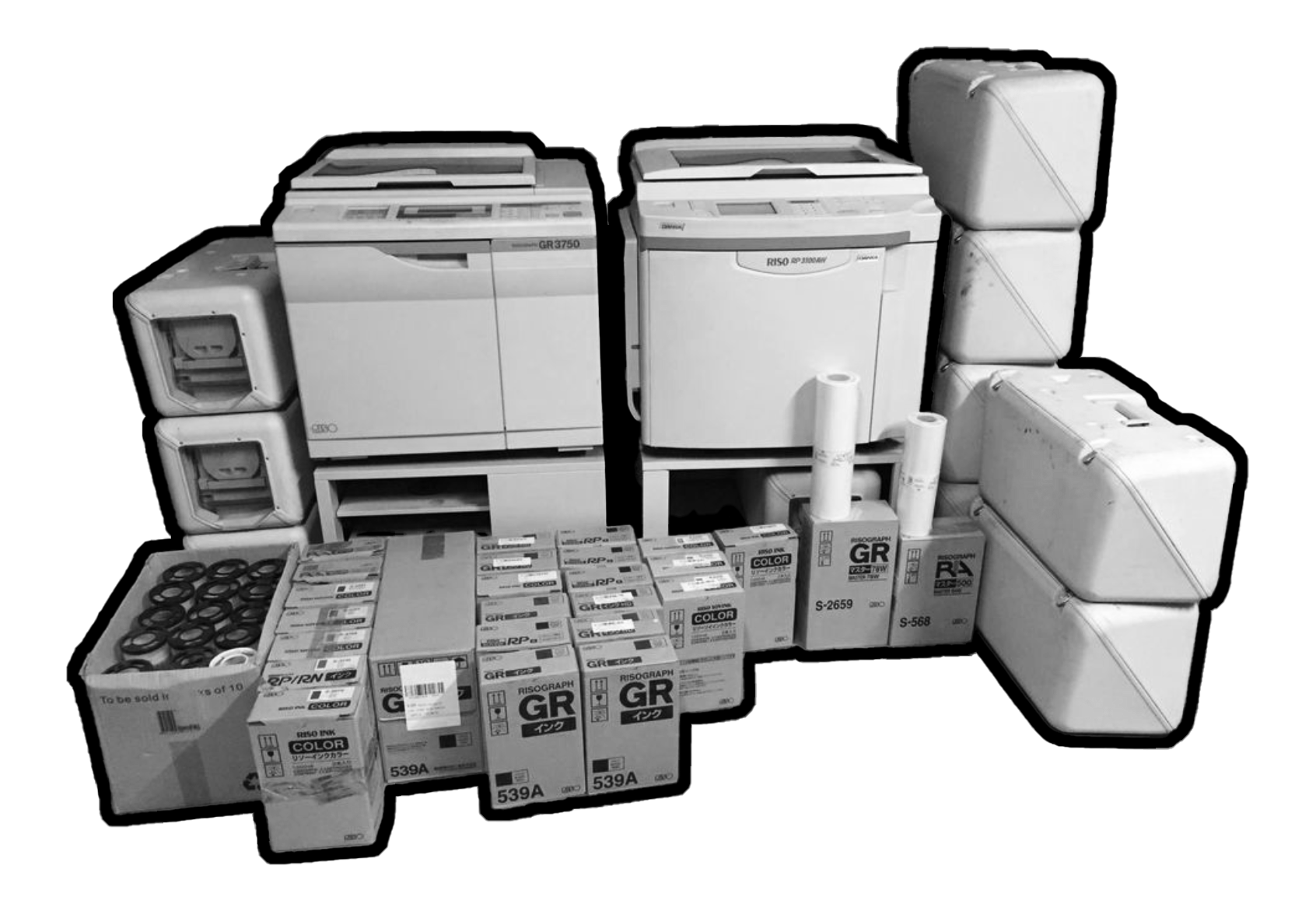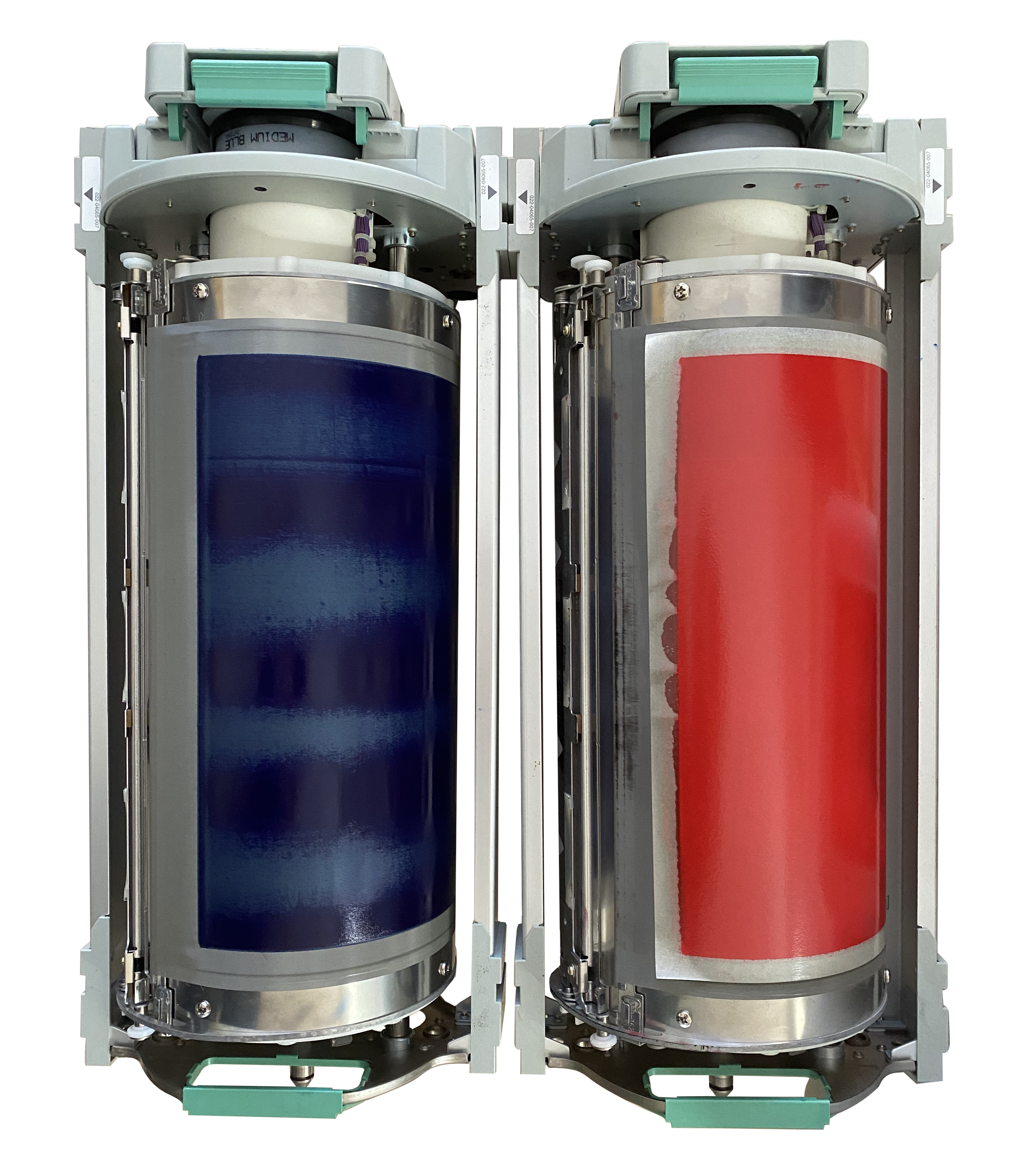The unmistakable lo-fi look and feel of the mighty Riso produces a finish that digital illustrators—myself included—have tried to mimic for a long time, with it’s mis-registration, and wholesome inky patchiness that brings a sense of pure warmth and humanity to even the shittest of artworks.
OWNING A RISO—GREAT, but only if you’re completely and utterly mad!
Once upon a time, I fell in love with Bianca—an RP3100 Risograph Duplicator Printing Press. I’d been enamored with Riso printing since 2012 when I first encountered it in London, but I knew that to truly understand this geek-approved process, I had to own one myself.
So, after much searching, I bought two as part of a job-lot on Facebook Marketplace. Along with Ricky (a GR3750), I also acquired twelve cylinders, seventy-six litres of eco-friendly soy-based ink, and enough master-making material to waste liberally while learning this most mysterious of dark arts.
The original haul unearthed on Facebook Marketplace of 2x Riso machines (RP3100 + GR3750), 12 cylinders, and 76 litres of soy based printing ink, making it the perfect way to jump in blindly into this ridiculous way to make lo-fi art prints
Here’s a short movie of snippets from instagram stories, grabbed throughout my ownership of Bianca and Ricky… the happiness in my voice during such moments of failure are testament to just how much joy these machines can and do bring. Moments after listing Bianca for sale—something driven ONLY by us moving into a new apartment with no room for her—she was snapped up and shipped off to her new keeper. One day, I’d LOVE her back in my life.
Overcoming Problems
Here’s some of the challenges Bianca threw my way before she was functional:
Connectivity issues: To align colours properly, I had to hack together random printer drivers. The solution? Use a vintage MacBook as a middleman to translate between the two machines.
Master-making: The feeder was so caked with dried ink that it took 7 cans of WD40 to get it moving again.
Master ejection: Getting the master to eject from the cylinder was another battle entirely caused almost entirely by a wonky cog and some elastic bands installed by a complete moron (not me!).
Paper feeding issues: Bianca had a charming habit of grabbing upward of 18 sheets at once, which made printing a nightmare. A fresh rubber separation pad helped.
Paper ejection issues: If the paper was too thick, or too thin, or Bianca was just not in the mood, it refused to exit the machine correctly.
Ink feed problems: Years of clogged ink meant taking each drum apart and cleaning them with petrol in the kitchen sink. Our landlord would have had a conniption. (Luckily, they kicked us out ages ago, so I think I’m safe admitting this now.)
Two of Bianca’s cylinders—each a 10kg clunking mechanical rotating deathtrap of a drum, that carries the image master, and squeezes liquid ink from it’s centre through a fine metal mesh, through the master, and onto the paper that passes beneath. They’re placed in the machine, one at a time, meaning each colour is built up on the finished print one at a time, rather like silkscreen printing
Is It Really Worth OWNING ONE?
That depends on how determined you are to run a Riso at home with any kind of consistency. It’s a lot like owning a vintage tractor—it’s a crime of passion rather than something any sensible person would subject themselves to. Clearly, I’m a glutton for punishment with this sort of project.
If you like things to just work, this is not for you. If you like a mid-tier challenge, this is not for you. But if you love the look of Riso prints enough to fight through every last challenge, then sure, maybe you’re just mad enough to own one.
Even I—a man who once chose to rebuild and fire up a very, very dead 1952 Ferguson tractor following 18 months of hardcore research, and a lot of graft—didn’t love it quite as much as I probably should have. She was a pain in the arse, but yeah, I would totally do it again.


